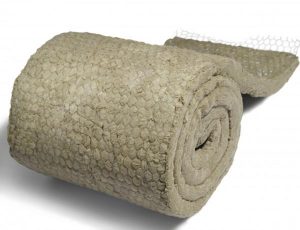Fiberglass insulation has been the most popular type of home insulation, and it’s easy to see why: Fiberglass is affordable, easy to install, readily available in a wide variety of sizes and, most importantly, an excellent insulator.

Fiberglass insulation is composed of fine glass fibers that are woven, lightly compressed and then cut into long rolls or batts (slabs/rectangular blocks). It is available faced with kraft paper or aluminum foil as well as unfaced. Fiberglass also comes as loose-fill insulation, which can be spread by hand or blown into place by a mechanical blower.
Today, fiberglass remains the undisputed king of insulation, but its crown is being threatened by a relatively new insulating material: Rockwool also known as mineral wool.

Mineral wool, which is also commonly called rock wool, comes in easy-to-install batts, similar to fiberglass. But instead of being composed of fluffy glass fibers, rock wool is made from volcanic rock, primarily basalt.
What’s the differences between these two popular types of insulation?.
R-Value: The thermal resistance of insulation is measured by what’s commonly known as the R-value, and the higher the R-value, the better. Rockwool has an R-value of 3-4 per inch, one of the highest for insulation materials on the market. But what does this mean? The R-value of insulation represents its heat resistance. The lower the R-value, the less it blocks heat. In other words, materials with higher R-values have higher insulating qualities. Don’t feel confused if you see an R-value on the label that is much higher; if you buy 3-inch thick Rockwool batts, the R-value may be approximately 9-12. This is 3 inches times the R-value. Fiberglass has an R-value of approximately 2.2 to 2.7 per inch of thickness.
Size: Fiberglass insulation is available in a wider range of sizes and types than mineral wool. Mineral wool insulation is typically only available in unfaced batts.

Sustainability: Mineral wool is composed of 70 percent or more recycled content. Fiberglass insulation typically contains 20 to 30 percent recycled content.
Cost: Fiberglass insulation costs 25 to 50 percent less than mineral wool. Fiberglass insulation for a 2×6 wall costs between 57 cents and 72 cents per square foot. Mineral wool insulation for the same wall runs about $1 to $1.10 per square foot.
Density: Mineral wool insulation has superior sound-deadening properties. It has a density of 1.7 pounds per cubic foot, as compared to 0.5 to 1.0 for fiberglass. Because of its density, mineral wool is hard to compress. Fiberglass, on the other hand, will lose some of its insulating value if it’s compressed too tightly.
Weight: Fiberglass is lightweight and easy to carry, but the batts are rather limp and can be challenging to set into place. Mineral wool is heavier than fiberglass, but the batts are also stiffer, so they don’t bend or flop over as easily.
Water Resistance: Mineral wool insulation is hydrophobic, meaning it’s highly resistant to moisture and water. Since it doesn’t absorb moisture, mineral wool doesn’t promote rot, corrosion, fungi, mold, mildew or bacterial growth. If fiberglass insulation gets wet, it becomes soggy, and its insulating value drops significantly.
Loose-Fill: Loose-fill fiberglass insulation provides a quick, easy and economical way to insulate attic floors and wall cavities. Loose-fill mineral wool does exist, but it’s difficult to find.
Installation: Mineral wool comes in dense, firm batts that are friction-fit into place; no stapling required. Fiberglass batts must be secured with staples or wire. To cut fiberglass insulation, compress it flat with a board or metal straightedge, then slice it with a utility knife. Use a serrated bread knife or woodcutting handsaw to cut mineral wool insulation. It’s recommended that you wear a dust mask when cutting and handling any type of insulation, including fiberglass and mineral wool.
Fire Resistance: Mineral wool is extremely fire resistant and can be used as a firestop. Fiberglass insulation is noncombustible, but not nearly as fire resistant as mineral wool.





